How to Create Dog Training Videos for Your YouTube Channel – 2024 Guide 22 Jan 2024 12:44 AM (last year)
Since we live in a day and age where a lot of digital content comes in the form of video, nobody should be surprised why YouTube is the most popular platform. If you look at some studies, you will see there are more than one billion people who use it daily.
Furthermore, billions of videos are created with various target audiences in mind. Of course, not all of them come in the same quality.
The quality of the video is what will determine the number of views. Naturally, this is not the only factor you should take into consideration. We are also talking about things such as niche and the content creator himself.
We will look at an example of video dog training in our article. If you are interested in finding a tool to help you make a video of this sort, give this a view.
Dog training videos are especially important since the content creator is about to provide their knowledge about how they should conduct themselves regarding this activity.
Remember, not everyone is competent enough to talk about this aspect without any background or experience. That is why we would like to talk about this in detail. Without further ado, let us begin.
Filming a Video
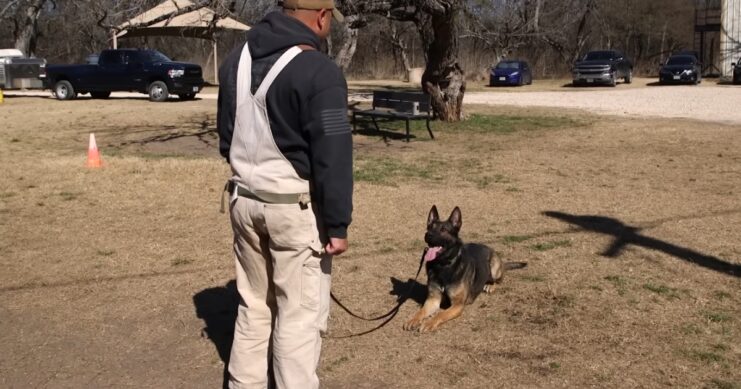
Before we go into the details of recording a dog training video, we want to talk about videos in general. Every video requires several factors. The first one is the proper equipment.
You cannot film a video without having equipment that can provide you with the best possible quality. That is why you will see content creators strive to find the best possible equipment, which is, again, not cheap.
Naturally, this does not mean you need to break the bank in all cases. The next factor that requires your attention is the scenario. While it may seem strange that you will need to see a scenario in cases where you will record dog-training videos, we beg to differ.
You will need to think about the training you want to film. That alone is a scenario, and you must think about it carefully before you press record.
The final thing that requires your attention is the background. What do we mean when we say this? We are talking about the setting where the recording will take place.
In the case of dog training, you need to think about whether you will conduct recording indoors or outdoors. When you consider all of these three factors, you will get the proper idea about how it should be conducted.
As you delve into the intricacies of canine behavior and communication, it becomes apparent that mastering the non-verbal cues of our loyal companions is not only essential for effective training but also lays a foundation for the insightful guidance provided in the subsequent article on creating compelling dog training videos.
Dog Training in the form of a Video
Next, we want to talk about using video format for dog training. The easiest way is to take a look at this approach as a course. The reason why this is needed is that you are about to create a course, whether that was your initial idea or not.
What do we mean? Well, these training videos aim to share your knowledge with others. The consumers will look at these several times and try to gather as much knowledge as possible.
That is why it is necessary to look at it from this perspective. So, the goal is to use your consumers’ lenses. Thinking about making a series of videos where you will provide all the relevant information regarding all the exercises you are about to talk about.
As you can see, this is a lot of work that requires a lot of thinking on your behalf. That is why it is important to think from a wider perspective, which we pointed out when we discussed the scenario factor.
We already said that YouTube is the most important platform for sharing content of this source. With that in mind, it is important to say that the content should be, let us say, YouTube-friendly.
We all know numerous factors are determined by the trends that are present on the platform, which determine how most videos will look like. That is why it is absolutely important to consider them.
Different Camera Angles
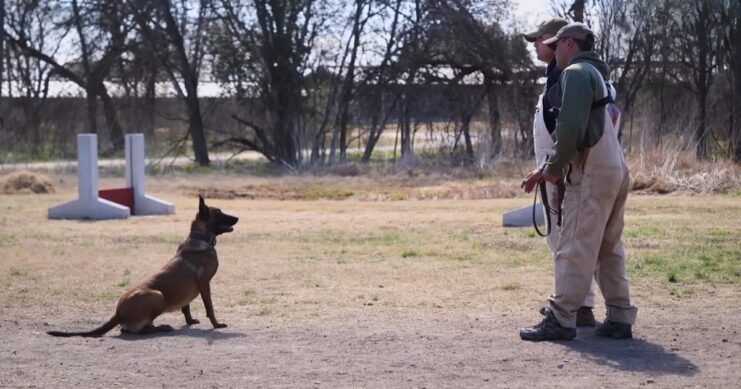
To prevent your content from being too simplistic, you will take the camera and try to film the content from various angles. Surely, this was something that was reserved solely for the educated individuals who knew.
Since practically all forms of education are available online, it is possible to learn these skills without going to formal school, where these skills are taught for a couple of years before an individual is on the highest possible level.
You will find that most content creators do not use any extra equipment other than their mobile phones. Since these are quite convenient, they can be used to film the content from various angles.
Fortunately, they are much more accessible than they have been in the last 20 years. With that in mind, you can use them to record your little friend while he or she is exercising or undergoing training.
YouTube-Friendly Content
The final factor we want to discuss is the creation of YouTube-friendly content. We’ve addressed this briefly, but we think it is important to expand on it. Making a two-hour video of training your dog is simply not going to attract a high number of views. Instead, it would be best if you thought about how to make much more engaging content.
At the same time, you need to think about the pace of the video. It is important to record the most important factors of the training and still keep the content as interesting as possible. If you do not do it properly, then the chances of attracting viewers are rather slim. That is why you should conduct research where you will find several ways you can do exactly that.
Closing Thoughts
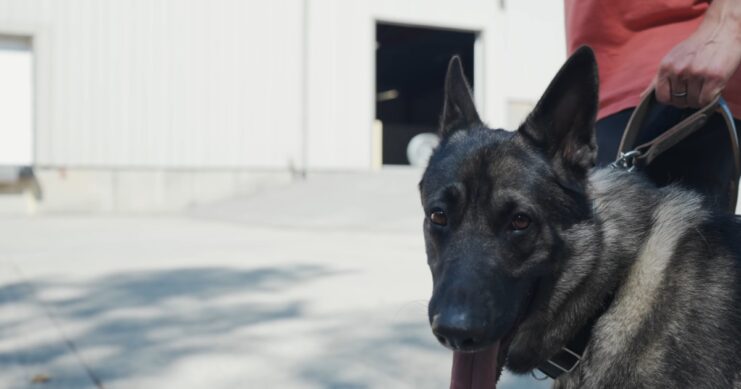
As you can see, creating dog training videos is quite popular in this day and age. Here, you can find several factors you need to utilize to make them as good as they need to be. We are certain you will find this insight of ours interesting.
The post How to Create Dog Training Videos for Your YouTube Channel – 2024 Guide appeared first on Oh Mi Dog.
Dog Training Tips for First-Time Owners: Avoiding Common Mistakes 6 Dec 2023 5:07 AM (last year)
Being a first-time dog owner can be an exciting but challenging experience. I knew this firsthand when I brought home my first furry friend. To ensure a smooth transition into dog ownership, it’s important to avoid common mistakes. Here are some essential dog training tips for first-time owners to help them navigate the challenges and ensure a happy and well-behaved canine companion.
Key Takeaways:
- Start training early to establish good habits.
- Be consistent with your training methods and commands.
- Use positive reinforcement to reward desired behavior.
- Seek professional help or attend training classes if needed.
- Patience and persistence are key in dog training.
Considerations Before Getting a Dog
Before getting a dog, there are several important considerations for first-time owners. It’s crucial to evaluate your time availability, lifestyle suitability, living space, and cost, and determine the right type of dog for your needs. Taking these factors into account will help ensure that you are fully prepared and ready to take on the responsibility of dog ownership.
Time availability is a significant consideration when getting a dog. Dogs require exercise, training, and attention daily. If you have a busy schedule or work long hours, you may need to consider whether you have enough time to dedicate to a dog’s needs.
Your lifestyle also plays a role in dog ownership. Some dogs require more exercise and mental stimulation than others. If you lead an active lifestyle and enjoy outdoor activities, a high-energy breed may be a good fit for you. On the other hand, if you prefer a more laid-back lifestyle, a low-energy breed may be more suitable.
The size of your living space is another factor to consider. Some breeds require more space to roam and play, while others are more adaptable to smaller living environments. It’s important to ensure that your living space can accommodate a dog comfortably.
Cost is also an important consideration. Owning a dog comes with various expenses, including food, veterinary care, grooming, training, and supplies. It’s crucial to budget for these expenses to ensure that you can provide the necessary care for your dog. It is advisable to talk to the trainers, so check here for training costs.
Lastly, determining the right type of dog for your needs is essential. Different breeds have different temperaments, exercise requirements, and characteristics. Researching and understanding different breeds will help you choose a dog that aligns with your lifestyle and preferences.
Potty Training Tips for New Dogs
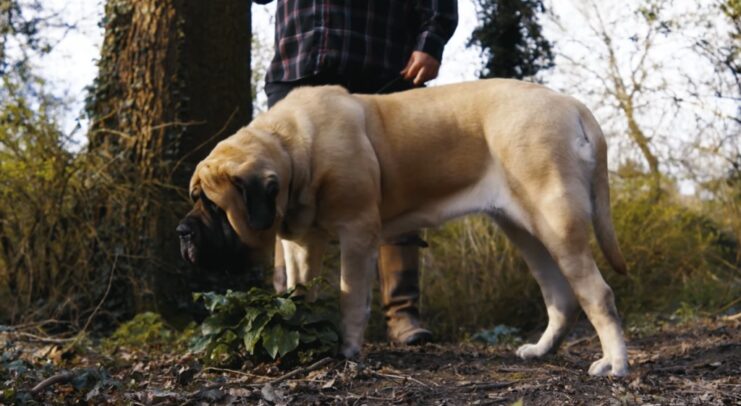
Potty training is an essential aspect of caring for a new puppy or dog. By establishing a consistent routine and using positive reinforcement, you can teach your furry friend where and when to do their business. Here are some effective potty-training tips to help you and your new companion on the path to success.
Establish a Designated Bathroom Area
To avoid confusion, it’s important to establish a designated bathroom area for your dog. Choose a specific spot in your yard or create a designated indoor area with puppy pads or a litter box for small dogs. By consistently bringing your dog to this area, they will learn to associate it with bathroom breaks.
Set a Potty Schedule
Having a consistent potty schedule is essential for successful house training. Take your dog outside or to their designated bathroom area at regular intervals throughout the day, such as after meals, naps, and playtime. This routine will help your dog learn when and where to go potty.
Use Positive Reinforcement
Positive reinforcement is a powerful tool for potty training. Whenever your dog successfully goes potty in the designated area, be sure to praise and reward them with treats or verbal praise. This positive reinforcement will help reinforce the behavior and motivate your dog to continue using the right spot.
Consider Crate Training
Crate training can be a helpful tool for potty training, especially for young puppies. Dogs have the instinct to keep their sleeping area clean, so by confining them to a crate when you are unable to supervise, you can prevent accidents in the house. Just be sure to let your dog out for regular potty breaks and never use the crate as a form of punishment.
With patience, consistency, and positive reinforcement, potty training your new dog can be a rewarding experience. Remember to stay calm and reward good behavior, and soon enough, your furry friend will become a pro at using their designated bathroom area.
Early Socialization for Puppies and New Dogs
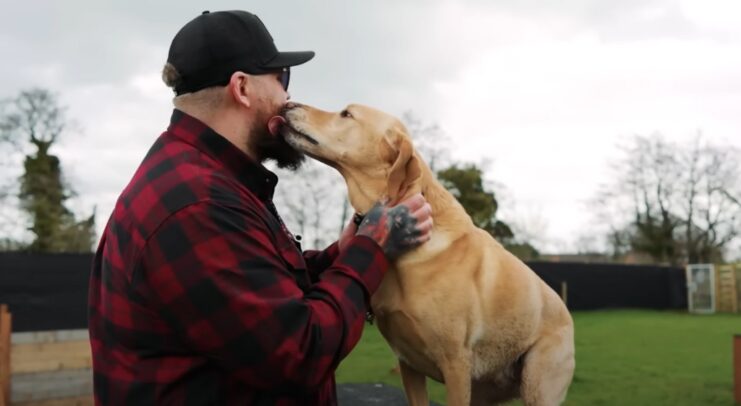
When it comes to raising a well-behaved companion, early socialization plays a crucial role in shaping a dog’s behavior and temperament. The first three months of a puppy’s life are particularly critical for exposing them to various sights, sounds, places, people, and experiences. By gradually introducing them to new positive experiences, we can help prevent anxiety, fear, and aggressive behaviors later in life.
The Benefits of Early Socialization
- Builds confidence: Socializing puppies at a young age helps them develop confidence and a positive outlook on the world.
- Reduces fear and anxiety: Exposing puppies to different environments and situations early on helps them become desensitized and less likely to develop fear or anxiety-related issues.
- Promotes better behavior: Socialized puppies are more likely to be well-behaved and obedient, as they have learned how to interact positively with humans, other animals, and their surroundings.
- Improves adaptability: Dogs that have been properly socialized are better equipped to handle new situations, such as traveling or being introduced to new environments.
How to Socialize Your New Puppy
Here are some tips to help you socialize your new puppy:
- Start early: Begin socializing with your puppy as soon as you bring them home. The critical socialization period begins at around 3 weeks and continues until around 16 weeks of age.
- Expose them to various environments: Take your puppy to different locations, such as parks, pet-friendly stores, and busy streets, to expose them to different sights, sounds, and smells.
- Introduce them to new people and animals: Gradually introduce your puppy to different people, including children and individuals wearing different types of clothing. Arrange playdates with other well-behaved dogs to help them learn proper social skills.
- Use positive reinforcement: Reward your puppy with treats, praise, and affection when they exhibit calm and friendly behavior during socialization experiences. This will help them associate new experiences with positive outcomes.
- Enroll in puppy classes: Puppy training classes can provide a structured environment for socialization and learning basic obedience skills. These classes also offer an opportunity for your puppy to interact with other dogs and people under the guidance of a professional trainer.
| Benefits of Early Socialization | How to Socialize Your Puppy |
|---|---|
| Builds confidence | Start early |
| Reduces fear and anxiety | Expose them to various environments |
| Promotes better behavior | Introduce them to new people and animals |
| Improves adaptability | Use positive reinforcement |
| Enroll in puppy classes |
Basic Dog Training for All Dogs
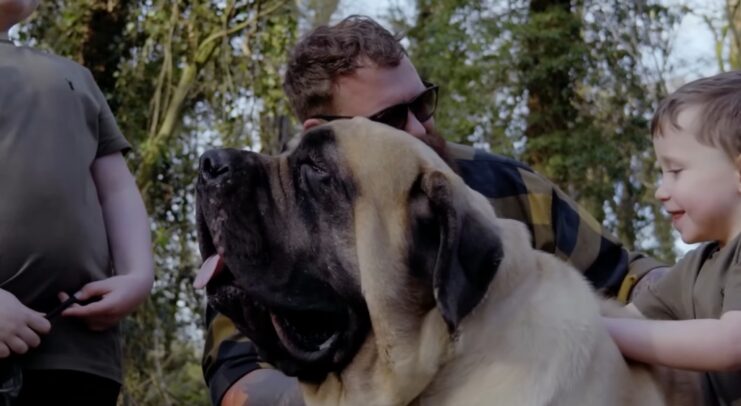
When it comes to dog training, whether you have a new puppy or an older dog, basic training is essential for their well-being and your peace of mind. Basic dog training includes socialization exercises and leash training, which help establish a routine and reward good behavior. By investing time and effort into these training techniques, you can ensure that your dog becomes a well-mannered and obedient companion.
The Importance of Socialization Exercises
Socialization is a crucial aspect of dog training, as it helps your dog feel comfortable and confident in various situations and environments. Socialization exercises involve exposing your dog to different people, animals, sights, and sounds. This exposure should be gradual and positive, allowing your dog to experience new things in a controlled and safe manner. By providing positive associations with these experiences, you can prevent anxiety, fear, and aggressive behaviors in your dog later in life.
Leash Training for Control and Safety
Leash training is another essential aspect of basic dog training. Teaching your dog to walk politely on a leash not only ensures their safety but also enhances your control over their behavior. Start by introducing your dog to the leash and collar, making sure they are comfortable wearing them. Then, use positive reinforcement techniques to teach them to walk calmly by your side, without pulling or lunging. Consistency and patience are key when leash training, so be sure to reward your dog for good behavior and provide clear cues to guide them.
By incorporating these basic dog training techniques into your routine, you can establish a strong foundation for a well-behaved and happy dog. Remember that training takes time and consistency, so be patient with your furry companions as they learn and grow. With dedication and positive reinforcement, you can create a harmonious relationship with your dog based on trust and mutual understanding.
Table: Socialization Exercises and Leash Training
| Training Technique | Description |
| Socialization Exercises | Expose your dog to different people, animals, sights, and sounds gradually and positively. |
| Leash Training | Teach your dog to walk politely on a leash, without pulling or lunging, using positive reinforcement techniques. |
Maintaining a Healthy Weight through Diet and Exercise
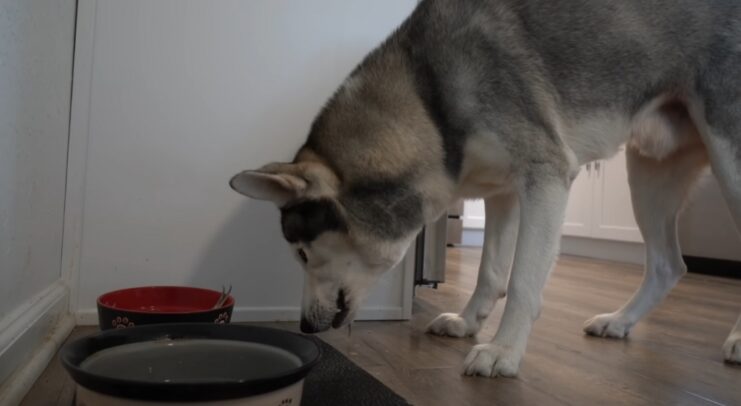
When it comes to our furry friends, maintaining a healthy weight is just as important as it is for us humans. A balanced diet and regular exercise play a crucial role in keeping our dogs fit and happy. Let’s explore some key tips for ensuring your dog maintains a healthy weight.
-
Provide a Balanced Diet
Feeding your dog, a well-balanced diet is essential for maintaining their weight. Opt for high-quality dog food that contains the necessary nutrients they need. Avoid overfeeding and be mindful of portion control. If you’re unsure about the appropriate amount of food to feed your dog, consult with your veterinarian for guidance.
-
Avoid Excessive Treats
Treats are a great way to reward your furry friend, but they should be given in moderation. Excessive treat consumption can contribute to weight gain. Instead, opt for healthy treats or use alternative rewards like praise or playtime to reinforce positive behavior.
-
Regular Exercise Routine
Regular exercise is essential for maintaining a healthy weight in dogs. Daily walks, playtime, and interactive toys that encourage physical activity are all great ways to keep your dog moving. The type and amount of exercise needed may vary depending on your dog’s breed, age, and overall health. Consult with your veterinarian to determine an appropriate exercise routine for your furry companion.
-
Monitor Weight and Adjust as Needed
Regularly monitor your dog’s weight to ensure they are within a healthy range. If you notice any significant changes, such as sudden weight loss or gain, consult with your veterinarian. They can guide you in adjusting your dog’s diet and exercise routine accordingly.
-
Seek Veterinarian Guidance
If you are unsure about your dog’s weight or need further guidance on maintaining a healthy weight, consult with your veterinarian. They can provide personalized recommendations based on your dog’s specific needs and help you create a tailored plan for their diet and exercise regimen.
| Benefits of Maintaining a Healthy Weight |
| 1. Improved overall health and increased longevity |
| 2. Reduced risk of obesity-related health issues, such as diabetes, joint problems, and heart disease |
| 3. Enhanced mobility and energy levels |
| 4. Better quality of life for your furry companion |
| 5. Prevention of weight-related discomfort and pain |
Maintaining a healthy weight for your dog is crucial for their overall well-being. By providing a balanced diet, monitoring treat consumption, implementing a regular exercise routine, and seeking guidance from your veterinarian, you can help your furry friend live a long, happy, and healthy life.
Conclusion
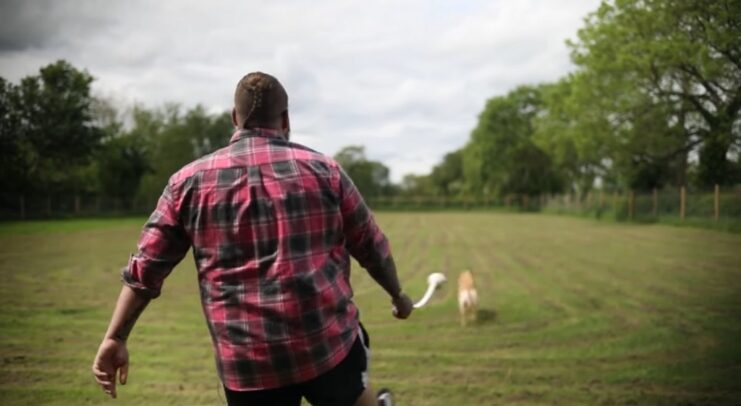
As a first-time dog owner, training your new canine companion can sometimes feel overwhelming, but by following these essential dog training tips, you can set yourself up for success. Remember to consider important factors before getting a dog, such as your time availability, lifestyle suitability, and living space. By taking these into account, you can ensure that you are fully prepared for the responsibilities of dog ownership.
Potty training is a crucial aspect of dog training, especially for new puppies. Having a plan in place and using positive reinforcement techniques will help your dog learn good bathroom habits. Additionally, early socialization is key to raising a well-behaved and confident dog. By exposing them to various experiences and positive interactions, you can prevent future behavior issues.
Basic dog training, regardless of breed or age, is important for all dogs. Establishing a routine, teaching basic commands, and investing in training will help you have a well-mannered and obedient companion. Lastly, maintaining a healthy weight through a balanced diet and regular exercise is essential for your dog’s overall well-being and longevity.
By incorporating these dog training tips, first-time owners can create a strong bond with their furry friends and enjoy a harmonious relationship. Remember that consistency, patience, and positive reinforcement are key to successful training. Embrace the journey of dog ownership and cherish the moments you spend with your four-legged companion.
FAQ
What should I consider before getting a dog?
Before getting a dog, it’s important to evaluate your time availability, lifestyle suitability, living space, and cost, and determine the right type of dog for your needs.
How can I potty train my new dog?
To potty train your new dog, establish a designated bathroom area, provide regular potty breaks, and use positive reinforcement for good behavior. Crate training can also be helpful for house training.
Why is early socialization important for puppies and new dogs?
Early socialization is crucial to ensure that puppies and new dogs become well-behaved and confident companions. It involves exposing them to various sights, sounds, places, people, and experiences.
What does basic dog training include?
Basic dog training includes socialization exercises and leash training to establish a routine and reward good behavior. Teaching basic commands like “sit,” “stay,” and “come” is also important for a well-mannered and obedient dog.
How can I maintain a healthy weight for my dog?
To maintain a healthy weight for your dog, provide a balanced diet with high-quality ingredients, avoid excessive treats, and ensure regular exercise. Consult with your veterinarian if your dog needs to lose weight and follow their recommendations.
What can first-time dog owners do to ensure a successful training experience?
First-time dog owners can ensure a successful training experience by considering important factors before getting a dog, implementing effective training methods, and maintaining a healthy lifestyle for their canine companions.
The post Dog Training Tips for First-Time Owners: Avoiding Common Mistakes appeared first on Oh Mi Dog.
Pet First Aid Essentials: How to Save Your Furry Friend 2 Oct 2023 11:33 AM (last year)
Have you ever wondered what you’d do if your beloved fur baby suddenly faced a health crisis? It’s a tough thought, but being prepared can make all the difference.
In this guide, we’re going to delve into the world of pet first aid, breaking it down into simple steps so you can confidently tackle emergencies when they arise.
Understanding Pet First Aid
Think of pet first aid as being your pet’s first line of defense when the unexpected happens. It’s like being the first responder for your furry friend. Just like humans, pets can find themselves in tricky situations – from scrapes and cuts to more serious emergencies like choking or heatstroke.
So, what exactly is pet first aid? It’s a set of essential skills and actions that you, as a responsible pet parent, can take to stabilize your pet’s condition in those crucial moments before professional veterinary help is available. In a way, you become their hero in times of need, providing them with immediate care and comfort.
Pet first aid is all about being prepared and knowing what to do in those unexpected and often frightening situations. It’s like having a safety net for your pet’s well-being, ensuring they have the best chance of a full recovery.
Remember, your furry friend relies on you for their care, and understanding first aid is a crucial part of being a responsible pet owner. And if you want to make sure your pet will be safe with you, go check https://cprcertificationnow.com/products/pet-cpr-first-aid-certification.
Assembling a Pet First Aid Kit
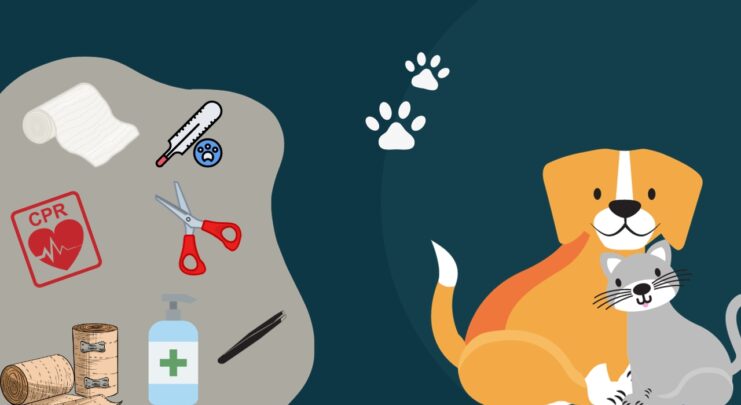
What if you’re embarking on a road trip? You wouldn’t leave home without packing your snacks, maps, and sunscreen, right? Well, your pet first aid kit is no different. You must buy many things and although not everything is cheap, you will be happy to have these things near you. Here’s what you need:
- Bandages: For those little scrapes and cuts.
- Antiseptics: To clean wounds safely.
- Scissors: Handy for trimming fur around wounds.
- CPR Mask: A must-have for CPR.
- Gauze and Tape: Perfect for securing bandages.
- Muzzle: In case your pet is in pain and might bite.
- Thermometer: To check their temperature.
- Tweezers: For removing splinters or ticks.
Now, don’t just toss these items in a drawer and forget about them. Keep your pet’s first aid kit easily accessible. It’s like having a trusty map in your glove compartment – you hope you won’t need it, but it’s comforting to know it’s there.
Common Pet Emergencies and Their First Aid
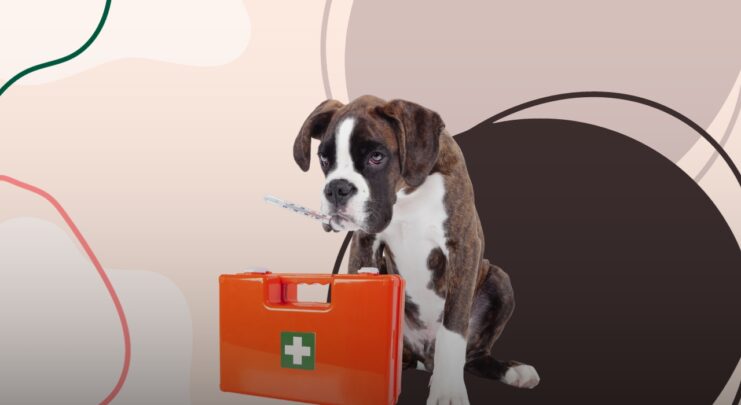
Let’s see which are the most common pet emergencies.
1. Cuts and Wounds
Ever had a paper cut? Ouch, right? Well, your pet can experience the same discomfort. If your furry buddy gets a cut, first, stay calm. Clean the wound gently with antiseptic, apply a bandage, and then get to the vet.
2. Choking
Your dog gulps down a treat too quickly and starts choking. What do you do? You perform the Heimlich maneuver but modified for pets. Place your hands just below the ribcage and give a quick, firm squeeze. If that doesn’t work, rush to the vet.
3. Heatstroke
On a blazing hot day, even your pup can overheat. If you notice heavy panting, excessive drooling, or weakness, cool them down by wetting their fur and applying ice packs to their armpits. Then, head to the vet pronto.
4. Poisoning
Dogs are known for their curiosity, but sometimes it gets them into trouble. If you suspect your pet ingested something toxic, call your vet or an animal poison control hotline immediately. They’ll guide you on what to do next.
5. Fractures
Picture this: Your cat takes a daring leap from a high shelf and lands awkwardly. If you suspect a fracture, try to keep your pet as still as possible, and support the injured limb with a splint or bandage. Rush to the vet for proper diagnosis and treatment.
CPR and Rescue Breathing for Pets
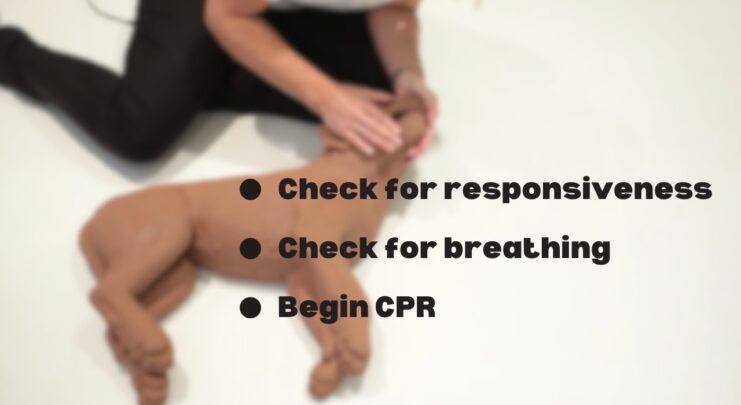
Now, let’s talk about a scenario that no pet owner wants to face: when your furry friend’s heart stops beating. If this happens, proper CPR can be a lifesaver.
- Check for responsiveness: Gently tap your pet and call their name.
- Check for breathing: Place your ear near your nose and mouth to listen and feel for breath.
- Begin CPR: If there’s no response or breathing, place your pet on their side, extend their head and neck, and perform chest compressions.
Remember, the rhythm for CPR in pets is different from humans. It’s like dancing to a unique beat – you’re pushing down firmly and then letting go. Combine this with rescue breaths, and you’re giving your furry friend the best chance of survival.
Handling Stressful Situations
When faced with an emergency, it’s normal to feel scared and overwhelmed. However, it’s crucial to stay as calm as possible. Your pet will pick up on your emotions, so the calmer you are, the more they’ll relax.
Comfort your pet with gentle words and strokes while you administer first aid. It’s like being their security blanket during a storm – your presence can be incredibly reassuring.
Preventing Pet Emergencies
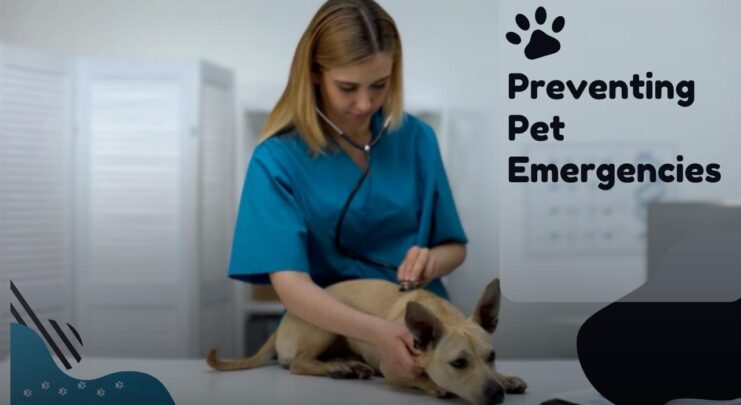
You know what they say: “An ounce of prevention is worth a pound of cure. To keep your pet safe and healthy, pet-proof your home just like you would baby-proof for a toddler. Lock away harmful substances, secure dangerous areas, and provide safe toys and activities.
Remember, regular vet check-ups are like routine maintenance for your car. They help catch potential problems early, ensuring your pet stays in tip-top shape.
Training and Certification
Want to take your pet’s first aid skills to the next level? Consider enrolling in a pet first aid and CPR course. These courses can provide hands-on training and certification, giving you the confidence to handle emergencies like a pro.
Conclusion
Alright, fellow pet enthusiasts, we’ve covered a lot of ground here, from assembling your first aid kit to performing CPR. You’re now equipped with essential knowledge to tackle pet emergencies head-on.
Remember, being prepared is the best way to show your furry friend just how much you care. So, take a deep breath, pack your kit, and let’s keep those tails wagging and whiskers twitching for many more happy and healthy years together.
The post Pet First Aid Essentials: How to Save Your Furry Friend appeared first on Oh Mi Dog.
Canine Memory Mysteries: Do Dogs Remember Us Forever? 6 Sep 2023 4:53 AM (last year)
Dogs have earned their place as man’s best friends for good reason: their loyalty, companionship, and unflinching affection make them part of our everyday lives. But have you ever considered whether our canine friends remember us forever or just fade into memory over time?
In this article we’ll delve into the fascinating world of canine memory: exploring its science while uncovering heartwarming tales that prove they do remember us often long afterwards!
The Canine Memory: A Complex Puzzle
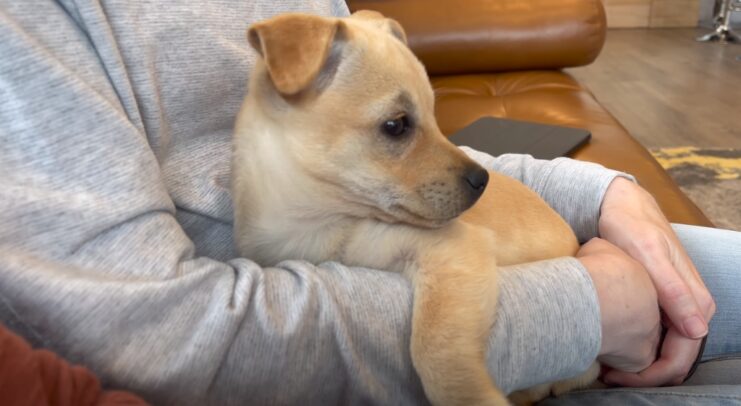
To understand if dogs remember us forever, we must first comprehend how their memory functions. Like humans, dogs possess different types of memory, including short-term and long-term memory. These memory systems work together to help dogs process and retain information.
Short-Term Memory
Short-term memory in dogs functions similarly to our own. It allows them to remember things for a brief period, usually lasting for a few minutes. It’s the type of memory that helps dogs follow simple commands, recognize familiar faces, and navigate their immediate environment. This memory is essential for their daily interactions and activities.
Long-Term Memory
Long-term memory is where things get more intriguing. While dogs may not remember every detail of their past, they can store memories for extended periods. Long-term memory is responsible for retaining knowledge, experiences, and emotional connections developed over time.
As you ponder your role as a pack leader in your dog’s life, it’s intriguing to explore the fascinating question of whether canines hold enduring memories of us, which is a topic delved into in the related article.
Factors Influencing Canine Memory
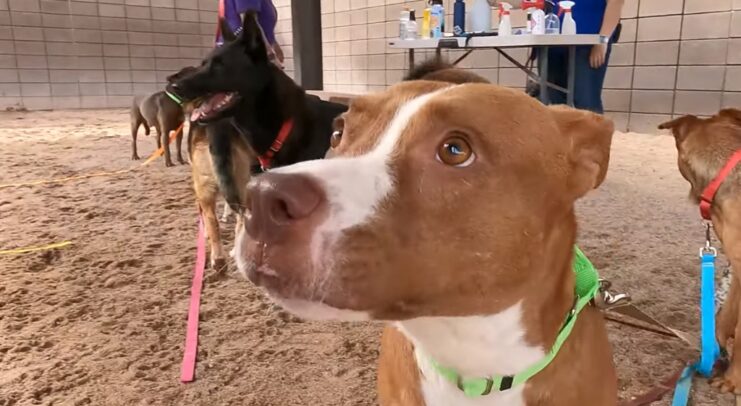
Several factors influence a dog’s memory, affecting how long they remember people and experiences. Let’s explore these factors:
1. Emotional Attachment
Emotional attachment plays a significant role in a dog’s memory. Dogs tend to remember people and experiences that elicit strong emotions, such as joy, love, or fear. According to SirDoggie, If a dog has a close bond with a person, they are more likely to remember them for an extended period.
2. Frequency of Interaction
The frequency of interaction with a person or situation can impact a dog’s memory. Regular contact helps reinforce their memory of someone, making it more likely that they’ll remember them for a long time.
3. Positive vs. Negative Experiences
Dogs remember both positive and negative experiences, but the emotional intensity differs. Negative experiences, such as trauma or mistreatment, can leave lasting impressions on a dog’s memory. Conversely, positive experiences, like playtime, treats, and affection, are also remembered fondly.
4. Breed and Intelligence
Breed and intelligence can influence a dog’s memory capacity. Some breeds are more predisposed to retaining information and memories, while others may have shorter attention spans. Highly intelligent breeds like Border Collies and Poodles tend to have better memory retention.
When striving to be a pack leader for your furry friend, it’s crucial to delve into the intricacies of canine communication, as understanding dog body language is a key aspect, discussed extensively in the related article.
Stories That Touch the Heart
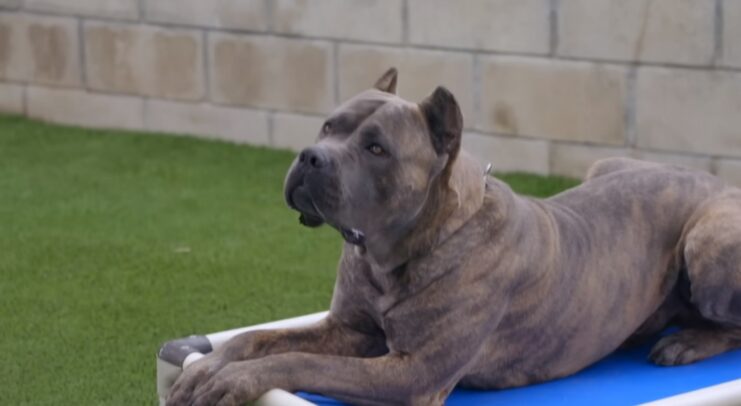
Science can offer a fascinating insight into canine memory; however, what truly illustrates its depth are heartwarming stories of lasting relationships between dogs and people. Here are a few remarkable tales that demonstrate how dogs remember us forever:
Hachiko: The Epitome of Loyalty
Hachiko, an Akita breed from Japan, is perhaps one of the most famous examples of a dog’s unwavering memory and loyalty. In the 1920s, Hachiko’s owner, Professor Ueno, passed away suddenly, leaving the loyal dog waiting at the Shibuya Station every day for nearly a decade, hoping for his owner’s return.
Hachiko’s story is a testament to a dog’s remarkable memory and the enduring bond they can form with their humans.
Capitan: The Faithful Friend
Capitan, an Argentinian dog, demonstrated his extraordinary memory and devotion after his owner, Miguel Guzmán, passed away in 2006. Capitan followed the funeral procession to the cemetery and continued to visit Miguel’s gravesite daily.
Despite being relocated multiple times by well-meaning individuals, Capitan always found his way back to the cemetery to be near his beloved owner. His story touched the hearts of many and showcased a dog’s remarkable memory and unwavering love.
Curious about your dog’s intelligence and behavior? A recent study explores the question of whether brain size correlates with canine intelligence, shedding light on your dog’s perspective as discussed in the related article.
Parker: The Rescued Retriever
Parker’s story is a testament to a dog’s ability to remember traumatic experiences and the healing power of love and patience. Found abandoned and severely injured, Parker was nursed back to health by his rescuer, Jessica.
Despite the initial trauma he endured, Parker formed an unbreakable bond with Jessica and her family. His story exemplifies how a dog’s memory can transform from fear and trauma to love and trust when provided with a safe and caring environment.
Canine Memory and Aging
Just like humans, a dog’s memory can be affected by aging. As dogs grow older, they may experience cognitive decline, which can impact their memory and overall cognitive abilities. This condition is often referred to as Canine Cognitive Dysfunction (CCD) or doggy dementia. Symptoms may include forgetfulness, disorientation, and changes in behavior.
While CCD can be distressing for both dogs and their owners, there are strategies and treatments available to support dogs with this condition. Providing mental stimulation, a consistent routine, and a loving environment can help mitigate the effects of CCD and improve a dog’s quality of life in its golden years.
Practical Tips to Strengthen Your Dog’s Memory
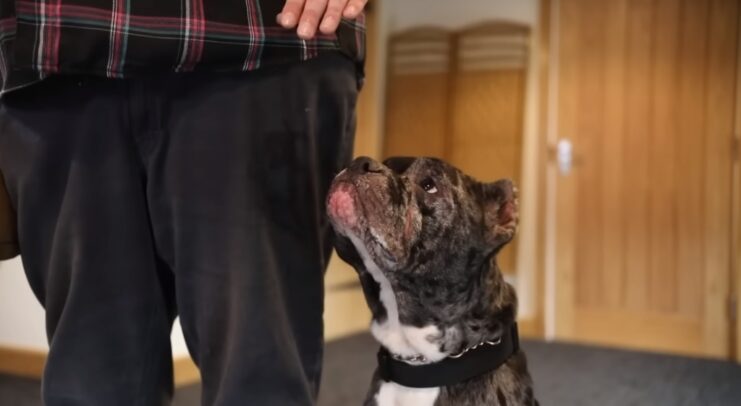
If you want to enhance your memory and build trust between yourself and your dog, here are a few practical strategies:
1. Consistent Training
Regular training sessions not only reinforce your dog’s memory of commands but also provide mental stimulation. Use positive reinforcement techniques like treats and praise to make training enjoyable for your furry friend.
2. Engaging Toys and Activities
Interactive toys and puzzles challenge your dog’s cognitive abilities, keeping their mind sharp. Engaging in activities like hide-and-seek or scent games can also stimulate their memory.
3. Maintain a Routine
Dogs thrive on routine. Consistency in feeding, exercise, and sleep schedules can help reinforce their memory of daily activities and expectations.
4. Socialization
Regular socialization between other dogs and people can help boost your dog’s memory, improving its ability to recall faces and experiences from various environments.
5. Show Love and Affection
Your dog is more likely to remember you forever if they associate you with love, care, and positive experiences. Shower them with affection and spend quality time together to build a strong bond.
Being recognized as a pack leader by your dog not only fosters a strong bond but also aligns with the positive effects of interacting with your canine companion on memory and problem-solving skills, as discussed in the related article.
Conclusion
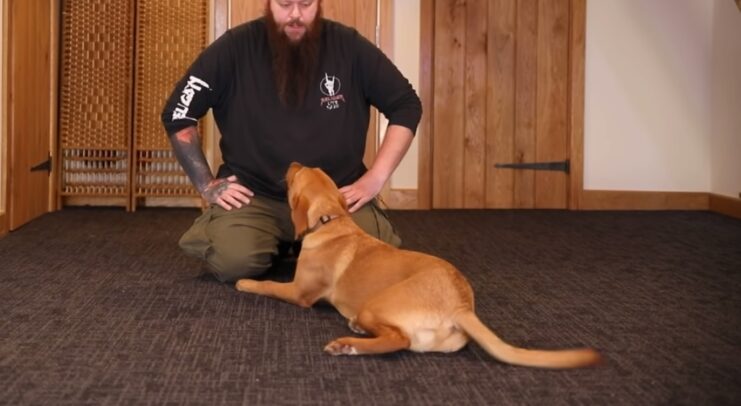
Do dogs remember us forever? While their memory may differ from ours, dogs certainly form lasting associations between people and experiences in their memories.
Their memory can be affected by factors like emotional attachment, frequency of interaction, and nature of experiences they’ve had – the story of Hachiko, Capitan, and Parker is a testament to this fact! Through such stories as theirs, we see how deeply connected these companions can become even during difficult times.
As responsible pet owners, we must foster these bonds and ensure our dogs remember us fondly with love and gratitude – just like we remember them with joy in our hearts.
Through consistent training sessions, engaging activities, or simply spending quality time together we have the power to strengthen their memory – just as much as they will remember us fondly in turn!
The post Canine Memory Mysteries: Do Dogs Remember Us Forever? appeared first on Oh Mi Dog.
Pet Care Innovation: Enhancing Dog Grooming with a Grooming Table 18 Aug 2023 3:23 AM (last year)
A dog grooming table is the right accessory for caring for your dog more comfortably. Whether you want to use a hair dryer, a nail clipper, a hair-removing glove, or a hair clipper, a dog grooming table makes things quite convenient for the pet and owner.
In today’s post, we’ll show you the everyday uses of this equipment and what size is best for you. At Firgelli Auto, we prioritize convenience, so we will also introduce you to the most ergonomic models – the adjustable dog grooming tables – powered by linear actuators.
What Is a Dog Grooming Table?
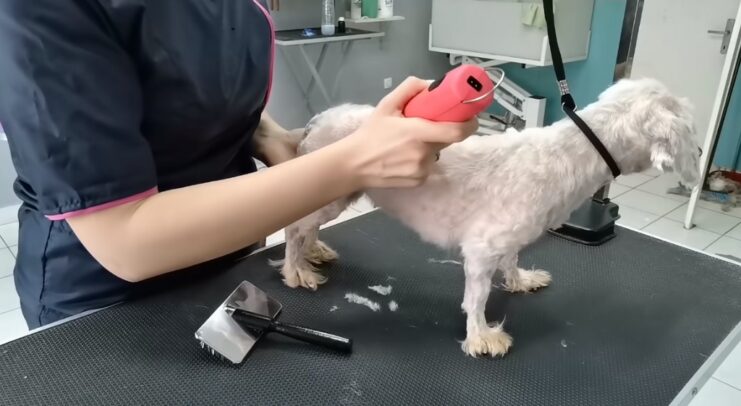
As its name suggests, a dog grooming table is designed to groom your dog more comfortably and safely. Its surface is non-slip, and, in general, it has an arm in which you can secure your dog to prevent it from jumping.
Although it is not essential to have a grooming table for dogs, the truth is that it makes the job much easier. It’s necessary if your dog has a lot of hair to brush or dry or requires regular grooming to prevent it from filling the house with hair.
The Right Height And Size For a Dog Grooming Table
Most commercially available grooming tables have a tabletop with a standard size of 36 by 24 inches. However, this varies from model to model and manufacturer to manufacturer.
Also, the size of the table depends entirely on your dog’s size and height. A good rule is ensuring the table is around 4 inches above your belly button.
The right one allows your dog to sit, lie, and recline in various comfortable locations. It is also essential that the dog feels comfortable without giving it too much freedom of movement.
Adjustable Dog Grooming Table Using Linear Actuators
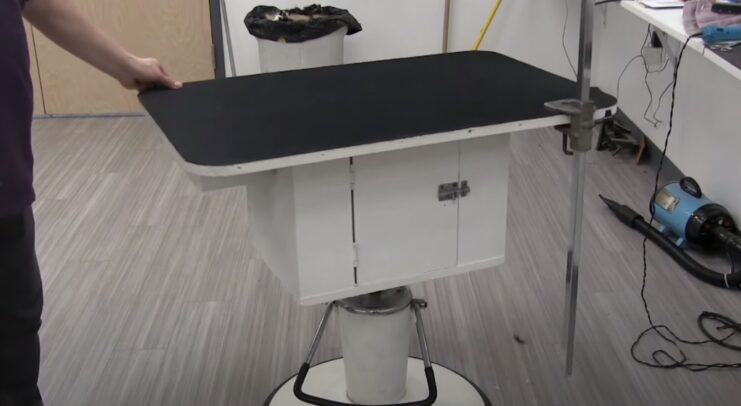
Most commercial adjustable dog grooming tables today work with an electric or hydraulic system. But if you’re a DIYer or a technician looking to make an adjustable grooming table, this is one of the most common uses of actuators from Firgelliauto bin the home. Here is a step-by-step guide to making your dog grooming table adjustable with a linear actuator:
- Get the materials needed: A grooming table, a powerful linear actuator, mounting brackets, screws, a control switch, and wiring.
- Choose the actuator: Select a suitable linear actuator based on weight capacity and stroke length. You can use our linear actuator calculator to determine the perfect fit for your table.
- Mount the actuator: Attach the mounting brackets and secure the actuator to the table’s frame for vertical movement.
- Connect wiring: Follow the manufacturer’s instructions to connect power wires from the actuator to the control switch and power source.
- Test functionality: Verify connections and power on the system. Use the switch to extend and retract the actuator, adjusting the table’s height.
- Secure components: Tighten screws, bolts, and nuts to ensure the stability and safety of the grooming table.
Are All Dog Grooming Tables Height-adjustable?
The answer is no. Not all dog grooming tables have an adjustable height system. So you should pay attention to this feature if you want one that has this feature.
Uses of a Dog Grooming Table
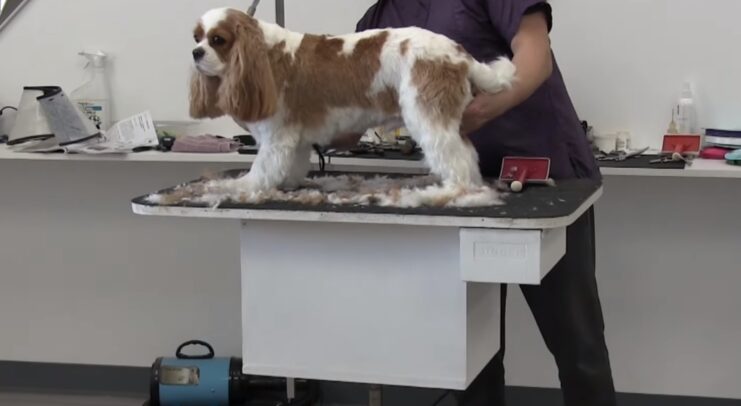
A dog grooming table is the main workspace of the groomer profession. There are various grooming tasks it can be used for. Some of the most common are:
- Bathing
- Brushing and drying
- Nail trimming
- Hair clipping and styling
- Examination and assessment by the vet
- Training and behavioral work
- Photography
- Physical therapy and rehabilitation
Is There Anything Else?
As a responsible and caring pet owner or professional groomer, ensuring the safety and comfort of your furry companions during grooming sessions is of paramount importance. A well-designed dog grooming table can make all the difference, providing a secure and convenient platform for various grooming tasks.
Let us explore the crucial safety and convenience features that every dog grooming table should possess to create a stress-free and enjoyable experience for both you and your furry friend.
Prioritizing Safety in Dog Grooming Tables
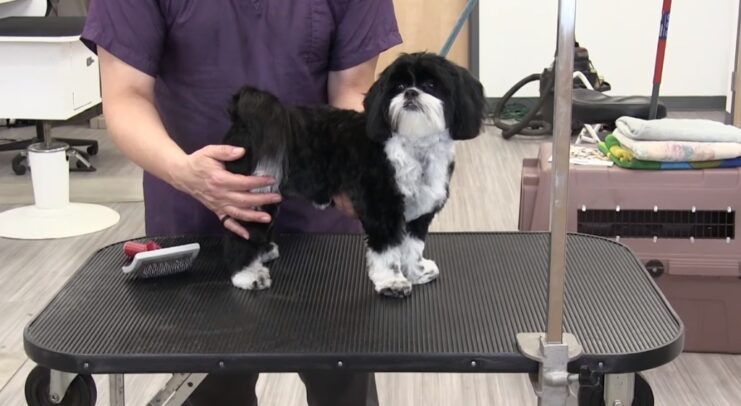
The well-being of your furry friend is paramount during grooming sessions. The best dog grooming tables ensure this through anti-slip surfaces and secure harnesses. An anti-slip surface keeps your dog steady, even when wet, minimizing the risk of slips and injuries.
A secure harness system holds your pet in place, letting you groom all areas of their coat safely. It should be adjustable and comfy, allowing your dog to sit, stand, or lie down while limiting excessive movements that could cause accidents.
Hydraulic or Electric – What’s the Best Height Adjustment System?
Choosing the right height adjustment system is key for an efficient grooming experience. While hydraulic grooming tables offer a cost-friendly option, they require manual effort to adjust the height and may lack the precision of their electric counterparts.
Electric tables, on the other hand, allow for precise height adjustments with a simple button press. This feature can be a game-changer for professional groomers juggling multiple dogs each day.
When it comes to enhancing your pet’s well-being, comprehending canine communication through an understanding of dog body language, as discussed in the linked article, plays a crucial role even in innovations aimed at enhancing dog grooming, explored in the companion piece.
Travel-Friendly Grooming: Importance of Portability and Storage

For mobile professional groomers or pet owners with space constraints, a portable grooming table is invaluable. Features like folding capability or detachable parts enable easy packing and transportation. This flexibility ensures that your pet can still enjoy professional grooming sessions, even when you’re away from your usual setup.
Quality and Maintenance: The Secret to a Hygienic Grooming Space
The longevity of a grooming table relies on its build quality and material. A high-quality, durable table can endure daily use and provide a clean workspace for your pet. Look for tables that are resistant to water, scratches, and stains for easy upkeep. Regular maintenance ensures a safe and clean environment for each grooming session.
When seeking ways to enhance your pet’s grooming experience, understanding the most effective training methods for dogs, as highlighted in the linked article, becomes instrumental in appreciating the innovative approach of using a grooming table, as discussed in the companion piece.
Conclusion
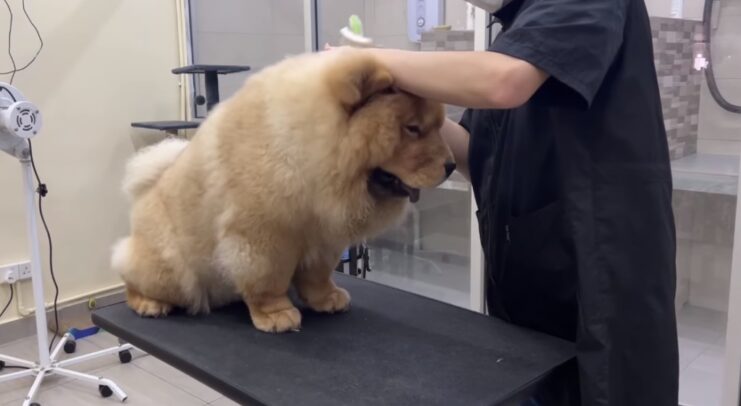
Grooming tables are helpful accessories to care for your dog more comfortably.
Not all are height adjustable, so that is a feature to consider. There are tables with an electric or hydraulic device to adjust their height comfortably.
When buying a grooming table for your dog, you should check that it is suitable for its size and weight. In addition, it is essential to consider various characteristics, such as adjustability, portability, or ease of cleaning.
Implementing insights from a professional’s dog grooming advice, as shared in the linked article, can significantly simplify your pet care routine, especially when considering innovative methods like using a grooming table, as explored in the companion piece.
Should you need help with the components necessary for building your own adjustable automated dog groom table, contact us.
The post Pet Care Innovation: Enhancing Dog Grooming with a Grooming Table appeared first on Oh Mi Dog.
Hydration Matters: How to Know if Your Dog is Drinking Enough Water – 2024 Guide 1 Jun 2023 4:13 AM (last year)
Owning a pet is a big responsibility. But, you are about to care for the little friend who will depend on you and your actions. Therefore, you should find a way to treat your pet properly. Of course, it is important to say that different pets require different conditions to be as healthy as they need to be. We are discussing a massive responsibility, and you must find the right balance between different aspects.
If you have a puppy, you need to think carefully about how to use diet to help your little friend grow. You cannot give them a chance to grow properly without them eating properly. Therefore, you should consult veterinarians who will help you comprehend how to make the right balance. What needs to be said is that you should pay attention to another crucial aspect, hydration. It is more important than diet.
Puppies need to drink way more water than grownups. So, of course, puppies will consume their mother’s milk. Still, many owners get their puppies when they are two or three months old. So, you will need to provide them with enough hydration. If you want to learn more about it, visit itseverythingdogs.com.
Today, we want to discuss how you can know whether your dog drinks enough water.
What Does Water Do for Your Dog?
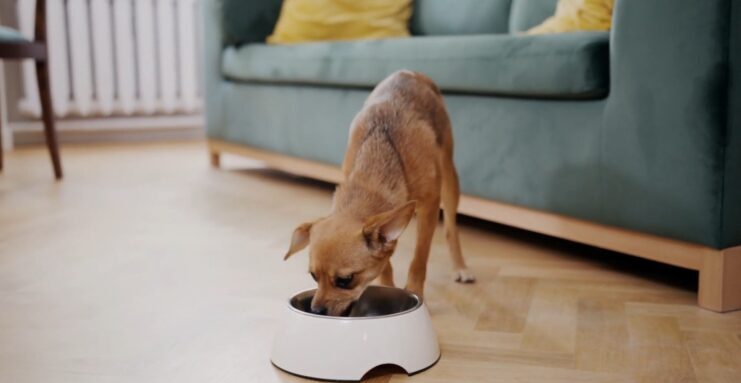
Drinking water does for pets way more than most people believe. It’s more than just satisfying their need for water. Instead, they will get numerous nutrients they need. One of the ways water helps with digestion and the absorption of nutrients. You will certainly agree that this plays a major role in a puppy’s development. Furthermore, we can see that it also helps with regulating body temperature.
Nevertheless, this is not all; enhancing cognitive function is another great benefit. Cognitive function is crucial since it is a procedure where the puppy will learn how to move properly. Moving properly is essential because it helps to avoid diseases like bone deterioration. We know there are many dog species with this sort of problem. Ensuring your little friend grows accordingly will eliminate the risks of these occurrences.
Naturally, not getting enough water will disrupt our functions. When that happens, we do not feel well. We are groggy and uncoordinated, and we tend to be lightheaded. So, nobody should be surprised that the same goes for pets. It can be quite problematic in situations when we are talking about a puppy. It will disrupt the growth of your little friend. Cells crave hydration, and we should provide them with water.
Canine Dehydration
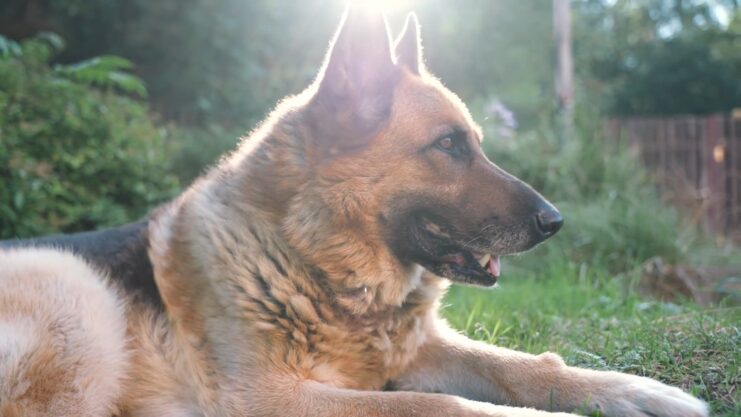
Most dog species, even when they are puppies, can self-regulate themselves while drinking water. But, of course, sometimes your dogs might not drink enough water. When that happens, it can cause many problems down the road. In addition, dehydration causes numerous issues, such as diarrhea, vomiting, and excessive urination, making the problem even more severe. So, it would be best if you avoided them.
Another problem with dehydration can be caused by eating solely dry foods. Again, the owner is responsible for finding the proper food and ensuring this does not happen. At the same time, the source of the problem can be as simple as not drinking enough water. Sometimes, just filling the bowl with water will not do the trick. You will need to tempt your little friend to consume enough of it.
To do that, you should carefully monitor how much your little friend consumes during the day. In addition, there are some tests you can conduct to see whether your dog is dehydrated or not. The easiest one is to check the gums. Gums are naturally wet. So when they become sticky and dry, this is a clear sign that your dog requires water. But, naturally, this is not the only test you can conduct.
How to Help Your Dog Stay Hydrated?
We have already said that some dogs will not drink water, even when thirsty. We do not know why this is the case, but it is way more common than most people know. With that in mind, you should ensure your dog is hydrated. How can you do that? First, ensure your dog always has a bowl of clean water. Unclean water can be a big problem, and your pet will likely avoid consuming this water.
The bowl of water should be replaced every day, even though some are left. Having fresh water is essential for your dog’s mood and health. Furthermore, frequently check whether some debris has fallen into the bowl. Even the smallest particles, such as hairs and bits of kibble, can be quite problematic for your dog. Therefore, you should ensure that even the smallest of particles are removed from the bowl.
Last, we want to highlight the importance of hiding the bowls from the sun. Drinking warm water is never comfortable, and the same thing should be said for your dog. Think about this; your pet drinks water to enhance body temperature regulation. At the same time, it is crucial not to try and cool off the water by adding ice.
Potential Problems and Conditions

Now that you know all about your dog’s hydration, we want to discuss the potential problems your pet can face due to dehydration. Of course, the biggest problem your pet can face is kidney disease. Kidney diseases are extremely problematic, and they can lead to even surgery. Not only that, but it can even be fatal.
Metabolic disorders are quite common as well. Naturally, diabetes is the most common one. Furthermore, you should not be surprised that this can lead to severe conditions like cancer. When you know all these potential issues, you will see that keeping your dog hydrated is essential.
In Conclusion
As you can see, keeping your dog hydrated is simple but requires your attention. Here, you can look at all the relevant information regarding this aspect. Also, it is important to understand the potential consequences. We are certain you will find this insight useful.
The post Hydration Matters: How to Know if Your Dog is Drinking Enough Water – 2024 Guide appeared first on Oh Mi Dog.
11 Active Dogs for Exercise Companions: Run, Jump, Play 25 May 2023 5:52 AM (last year)
Are you an avid fitness enthusiast looking for the perfect exercise companion? Look no further than man’s best friend! Dogs are not only loyal and loving companions but can also make excellent exercise partners.
In this article, we will explore the top dog breeds known for their high energy levels and athletic abilities. Whether you enjoy hiking, running, or engaging in outdoor activities, these breeds will surely keep up with your active lifestyle.
Let’s dive into the world of the best exercise companions for humans!
1. Dalmatians: Energetic and Versatile Exercise Partners
Dalmatians are famous for their distinctive spotted coat and boundless energy. They excel in various physical activities, such as jogging, agility training, and long walks. Dalmations can trigger allergies however, their athletic build and stamina make them ideal exercise companions for individuals seeking an energetic workout buddy.
- Temperament: Outgoing, energetic, and playful.
- Best known for High energy levels, stubbornness, and potential health issues (deafness, urinary problems).
- What we love about them: Loyal companions, and unique appearance.
2. Australian Shepherd: Active Intelligence for Outdoor Adventures
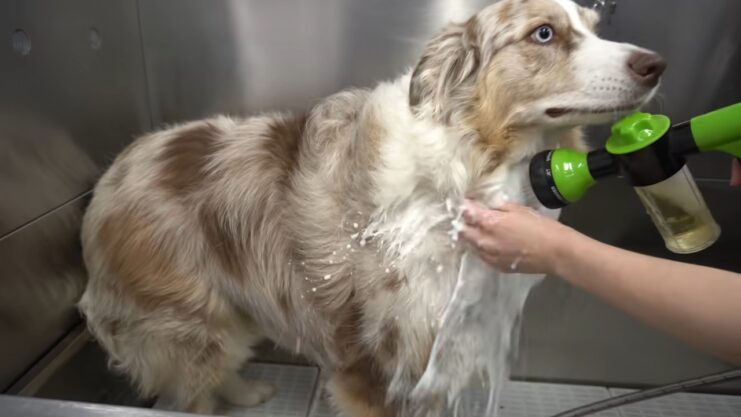
Australian Shepherds are highly intelligent and energetic dogs, making them exceptional exercise partners. They require mental and physical stimulation, so activities like obedience training, frisbee, and hiking will keep them content. With their strong herding instincts, Australian Shepherds are always ready for an adventure.
- Temperament: Intelligent, loyal, and active.
- Best known for Strong herding instinct, need for mental and physical stimulation and regular grooming.
- What we love about them: Versatile, responsive, and great with families.
3. Border Collie: The Ultimate Workaholic Exercise Buddy
Border Collies are renowned for their incredible agility and work ethic. These dogs have an inexhaustible amount of energy, making them perfect for active individuals. Engaging in activities like flyball, obedience trials, and herding exercises will not only satisfy their exercise needs but also provide mental stimulation.
- Temperament: Highly intelligent, active, and focused.
- Best known for Strong herding instinct, need for extensive exercise and mental stimulation, and potential behavioral issues if bored.
- What we love about them: Exceptionally intelligent, athletic, problem solvers.
4. Labrador Retriever: A Classic Choice for Active Lifestyles
Labrador Retrievers are well-known for their friendly nature and love for physical activities. These water-loving dogs excel in activities like swimming, running, and playing fetch. With their friendly temperament and boundless enthusiasm, Labs make wonderful exercise companions for both families and individuals.
- Temperament: Friendly, patient, and gentle.
- Best known for being Prone to overeating, tendency to chew, and regular grooming needed.
- What we love about them are: Loyal, great with children and other animals, and excellent swimmers.
5. Vizsla: A Sporting Breed for the Active Enthusiast
Vizslas are graceful and energetic dogs that thrive on intense physical activities. They require regular exercise to channel their energy effectively. Engaging in activities such as running, hiking, and agility training will help keep their active minds and bodies happy.
- Temperament: Affectionate, sensitive, and highly energetic.
- Best known for the Need for exercise and mental stimulation, potential separation anxiety.
- What we love about them are: Loyal, eager to please, strong bonds with owners.
6. Siberian Husky: Adventure Seekers for the Outdoorsy Soul
Siberian Huskies are bred for endurance and excel in colder climates. These beautiful and athletic dogs are perfect for outdoor enthusiasts who enjoy activities like sledding, skijoring, or hiking in cooler weather. Their striking appearance and friendly demeanor make them popular exercise companions.
- Temperament: Independent, adventurous, and active.
- Best known for High exercise requirements, the potential for escape attempts, the need for cool environments, and regular grooming for their thick coat.
- What we love about them: Beautiful appearance, excellent endurance, and great for outdoor enthusiasts.
7. German Shorthaired Pointer: Versatile Athletes for Various Activities
German Shorthaired Pointers are versatile athletes that excel in a wide range of physical activities. From swimming and running to participating in dog sports like dock diving and agility trials, these dogs are up for any challenge. They thrive in active environments and enjoy engaging in activities with their human companions.
- Temperament: Versatile, active, and intelligent.
- Best known for High energy levels, need for mental and physical stimulation, and potential for destructive behavior if bored.
- What we love about them: Athletic and agile, excel in various activities, loyal companions.
8. Bernese Mountain Dog: Gentle Giants with an Active Side
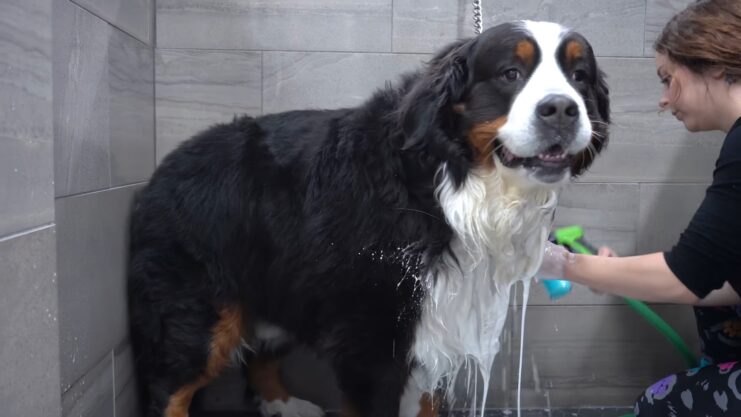
While Bernese Mountain Dogs have a calm and gentle nature, they still require regular exercise to maintain their overall well-being. These large and powerful dogs enjoy leisurely walks, hiking, and other low-impact activities. Their friendly and patient temperament makes them great exercise companions for those seeking a more relaxed pace.
- Temperament: Calm, gentle, and patient.
- Best known for Moderate exercise needs, potential health issues, and regular grooming for their long coat.
- What we love about them: Gentle giants, great with families, and striking appearance.
9. Rhodesian Ridgeback: Stamina and Grace Combined
Rhodesian Ridgebacks are known for their impressive endurance and sleek appearance. These dogs are natural runners and excel in activities like jogging, hiking, and even can cross (cross-country running with dogs). With their athleticism and loyalty, Ridgebacks make excellent exercise partners for active individuals.
- Temperament: Independent, athletic, and loyal.
- Best known for High exercise needs, the potential for stubbornness, and proper socialization with other animals.
- What we love about them: Impressive endurance, graceful appearance, devoted to their owners.
10. Weimaraner: Agile and Energetic Athletes
Weimaraners are athletic dogs bred for hunting and endurance. They require plenty of physical exercises to channel their energy positively. Engaging in activities like running, agility training, and long hikes will help keep their active bodies and minds stimulated.
- Temperament: Energetic, intelligent, and active.
- Best known for High exercise requirements, potential separation anxiety, and mental stimulation to prevent boredom.
- What we love about them: Agile athletes, great for active individuals, striking silver-gray coat.
11. Portuguese Water Dog: Active Companions for Aquatic Adventures
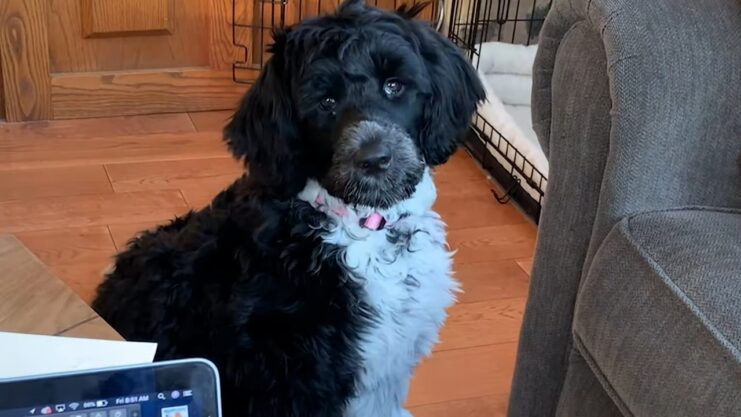
Portuguese Water Dogs, as the name suggests, are excellent swimmers and water lovers. They thrive in activities like swimming, dock diving, and water retrieving. With their intelligence and love for the water, these dogs make fantastic exercise companions for those who enjoy water-based activities.
- Temperament: Intelligent, active, and friendly.
- Best known for their Need for exercise and mental stimulation, and regular grooming for their curly coat.
- What we love about them: Excellent swimmers, versatile in water-based activities, and great companions for outdoor water adventures.
Conclusion
When it comes to finding the perfect exercise companion, these breeds stand out for their energy, athleticism, and eagerness to participate in various physical activities. Whether you’re a seasoned athlete or a casual fitness enthusiast, choosing one of these breeds as your exercise partner will ensure an active and enjoyable lifestyle for both you and your furry friend. Remember to consider each breed’s specific exercise requirements and tailor their activities to suit their individual needs. So lace up your sneakers, grab a leash, and embark on exciting adventures with your chosen exercise companion!
The post 11 Active Dogs for Exercise Companions: Run, Jump, Play appeared first on Oh Mi Dog.
17 Hypoallergenic Dogs That Don’t Shed: Fur-Free Friends 25 May 2023 5:40 AM (last year)
Are you looking for a family-friendly dog that won’t leave a trail of fur behind? Non-shedding dogs can be a great option for families with allergies or those who prefer a cleaner home. In this blog post, we’ll explore a variety of non-shedding dog breeds that are well-suited for families. We’ll provide detailed information on each breed, including their temperament, height, weight, and life expectancy. Read on to discover the perfect non-shedding companion for your family.
1. Poodle
Poodles have a curly, dense coat that continuously grows but does not shed much. Instead of shedding, their hair gets trapped within their curly coat, which requires regular grooming to prevent matting. Poodles are hypoallergenic, making them a suitable choice for individuals with allergies. Their minimal shedding reduces the amount of dander and allergens in the environment, potentially alleviating allergic reactions.
- Temperament: Intelligent, active, and easily trainable.
- Height: Standard Poodles range from 15 to 21 inches; Miniature Poodles stand 11 to 15 inches tall; Toy Poodles measure under 10 inches.
- Weight: Standard Poodles typically weigh 45 to 70 pounds; Miniature Poodles weigh 15 to 18 pounds; Toy Poodles weigh 5 to 10 pounds.
- Life Expectancy: On average, Poodles live for 10 to 18 years.
2. Labradoodle

Labradoodles are a crossbreed between a Labrador Retriever and a Poodle. Sometimes it is like Poodle vs Labradoodle because they inherit the Poodle’s curly and non-shedding coat, making them low-shedding or hypoallergenic, depending on the generation. Labradoodles combines the friendly and outgoing nature of Labradors with the non-shedding coat of Poodles. This makes them an excellent choice for families seeking a low-shedding and sociable dog breed.
- Temperament: Intelligent, friendly, and outgoing.
- Height: Labradoodles can vary depending on the parent breeds.
- Weight: Labradoodles can vary depending on the parent breeds.
- Life Expectancy: On average, Labradoodles live for 12 to 14 years.
3. Xoloitzcuintli
Xoloitzcuintlis have a short, fine coat that does not shed excessively. Their coat may require occasional grooming to remove loose hairs, but they are considered a low-shedding breed. They are known for their warmth. They have a higher body temperature compared to many other dog breeds, which can be comforting and soothing for individuals seeking a warm, snuggly companion.
- Temperament: Loyal, calm, and affectionate.
- Height: Standard Xolos stand between 20 to 30 inches; Miniature Xolos range from 14 to 18 inches; Toy Xolos stand around 10 to 14 inches.
- Weight: Standard Xolos weigh 25 to 40 pounds; Miniature Xolos weigh 10 to 15 pounds; Toy Xolos weigh 5 to 10 pounds.
- Life Expectancy: On average, Xoloitzcuintlis live for 14 to 16 years.
4. Portuguese Water Dog
They have a single-layered, wavy, or curly coat that does not shed much. Their hair continuously grows but tends to get trapped within the coat, reducing shedding. Portuguese Water Dogs are excellent swimmers and love water activities. Their non-shedding coat helps them stay comfortable in the water without leaving excessive amounts of hair behind, making them ideal for families who enjoy water-related adventures.
- Temperament: Intelligent, friendly, and lively.
- Height: Males typically range from 20 to 23 inches; Females range from 17 to 21 inches.
- Weight: Males weigh around 42 to 60 pounds; Females weigh around 35 to 50 pounds.
- Life Expectancy: On average, Portuguese Water Dogs live for 10 to 14 years.
5. Saluki
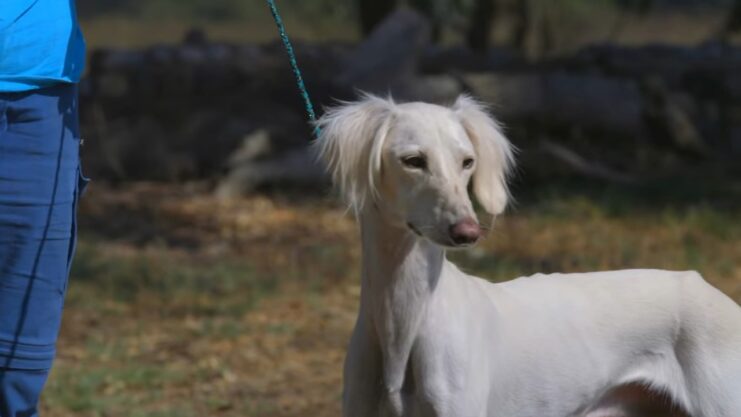
Salukis have a short and smooth coat that sheds minimally. Their thin coat texture and absence of an undercoat contribute to their low shedding. And mostly they are renowned for their grace and elegance. Their non-shedding coat allows their natural beauty to shine through without the constant need for extensive grooming, enhancing their regal appearance.
- Temperament: Graceful, independent, and gentle.
- Height: Males stand 23 to 28 inches tall; Females stand 21 to 26 inches tall.
- Weight: Males weigh around 40 to 65 pounds; Females weigh around 30 to 55 pounds.
- Life Expectancy: On average, Salukis live for 12 to 14 years.
6. Soft-Coated Wheaten Terrier
Soft-Coated Wheaten Terriers have a soft, silky coat that grows continuously but sheds very little. Their hair tends to get trapped within the coat, reducing shedding. They are known for their friendly and affectionate nature. Their non-shedding coat allows for more cuddle sessions without worrying about excessive shedding or allergies caused by pet hair.
- Temperament: Playful, friendly, and affectionate.
- Height: Males stand around 18 to 19 inches; Females stand around 17 to 18 inches.
- Weight: Males weigh around 35 to 40 pounds; Females weigh around 30 to 35 pounds.
- Life Expectancy: On average, Soft-Coated Wheaten Terriers live for 12 to 15 years.
7. Afghan Hound
Afghan Hounds have a long and silky coat that grows continuously but sheds very little. Their hair tends to fall out naturally or get caught within the coat, resulting in reduced shedding. Afghan Hounds are often considered hypoallergenic, making them a suitable choice for individuals with allergies. Their non-shedding coat minimizes the amount of dander and allergens in the environment, potentially reducing allergic reactions.
- Temperament: Regal, independent, and affectionate.
- Height: Males stand around 27 inches; Females stand around 25 inches.
- Weight: Males weigh around 60 to 70 pounds; Females weigh around 50 to 60 pounds.
- Life Expectancy: On average, Afghan Hounds live for 12 to 14 years.
8. Maltese Terrier

Maltese Terriers have a long and silky coat that grows continuously but sheds very little. Their hair tends to get caught within the coat, reducing shedding. Maltese Terriers are known for their affectionate and gentle nature. Their non-shedding coat allows them to be close to their human family members without leaving behind excessive amounts of hair, making them great lap dogs.
- Temperament: Playful, affectionate, and fearless.
- Height: Maltese Terriers stand around 8 to 10 inches.
- Weight: Maltese Terriers weigh around 4 to 7 pounds.
- Life Expectancy: On average, Maltese Terriers live for 12 to 15 years.
9. Havanese
Havanese dogs have a soft and silky double coat that sheds minimally. Their hair grows continuously but gets caught within the coat, reducing shedding. Havanese dogs are highly sociable and friendly. Their non-shedding coat makes them a great choice for families with allergies or those who prefer a cleaner home environment.
- Temperament: Outgoing, friendly, and affectionate.
- Height: Havanese dogs stand around 8.5 to 11.5 inches.
- Weight: Havanese dogs weigh around 7 to 13 pounds.
- Life Expectancy: On average, Havanese dogs live for 14 to 16 years.
10. Italian Greyhound
Italian Greyhounds have a short and fine coat that sheds minimally. Their hair is thin and does not get trapped or shed excessively. Italian Greyhounds are known for their athleticism and agility. Their non-shedding coat allows them to participate in various outdoor activities without leaving behind excessive hair, making them a great choice for active families.
- Temperament: Gentle, affectionate, and adaptable.
- Height: Italian Greyhounds stand around 13 to 15 inches.
- Weight: Italian Greyhounds weigh around 7 to 14 pounds.
- Life Expectancy: On average, Italian Greyhounds live for 14 to 15 years.
11. Scottish Terrier
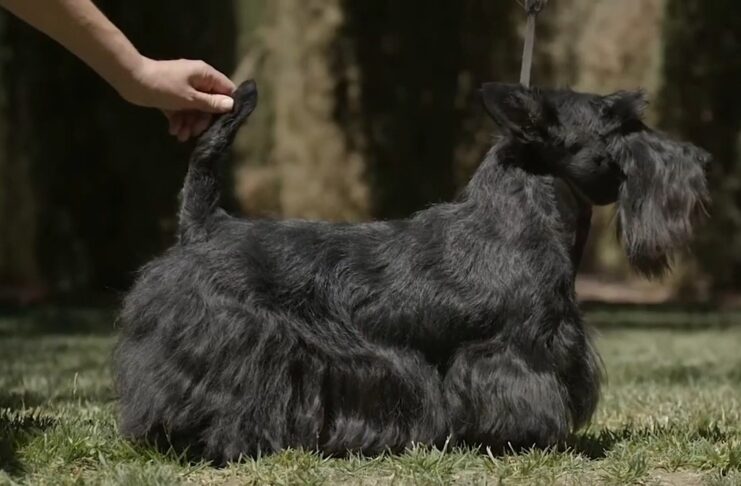
Scottish Terriers have a wiry double coat that sheds minimally. Their dense outer coat and undercoat trap loose hair, reducing shedding. Scottish Terriers are known for their independent and confident nature. Their non-shedding coat requires regular grooming to maintain their distinctive appearance, adding an element of pride for their owners.
- Temperament: Independent, confident, and spirited.
- Height: Scottish Terriers stand around 10 inches.
- Weight: Scottish Terriers weigh around 19 to 23 pounds.
- Life Expectancy: On average, Scottish Terriers live for 11 to 13 years.
12. Silky Terrier
Silky Terriers have a long and silky coat that sheds minimally. Their hair grows continuously but does not shed excessively. Silky Terriers are known for their alertness and confidence. Their non-shedding coat requires regular grooming to maintain its silkiness, adding to their overall charming appearance.
- Temperament: Alert, friendly, and confident.
- Height: Silky Terriers stand around 9 to 10 inches.
- Weight: Silky Terriers weigh around 8 to 10 pounds.
- Life Expectancy: On average, Silky Terriers live for 12 to 15 years.
13. Basenji
Basenjis have a short and fine coat that sheds minimally. Their hair does not have an undercoat, contributing to reduced shedding. Basenjis are known for their intelligence and unique vocalization, often referred to as the “barkless dog.” Their non-shedding coat allows them to be low-maintenance in terms of grooming, making them an appealing choice for individuals seeking a quieter breed.
- Temperament: Intelligent, curious, and independent.
- Height: Basenjis stand around 16 to 17 inches.
- Weight: Basenjis weigh around 22 to 24 pounds.
- Life Expectancy: On average, Basenjis live for 12 to 14 years.
14. Brussels Griffon
Brussels Griffons have a rough or smooth coat that sheds minimally. Their hair does not have an undercoat, reducing shedding. Brussels Griffons are known for their expressive and affectionate nature. Their non-shedding coat allows them to cuddle and interact closely with their owners without leaving behind a trail of hair.
- Temperament: Affectionate, alert, and curious.
- Height: Brussels Griffons stand around 7 to 8 inches.
- Weight: Brussels Griffons weigh around 8 to 10 pounds.
- Life Expectancy: On average, Brussels Griffons live for 12 to 15 years.
15. Bouvier des Flandres
Bouvier des Flandres has a thick double coat that sheds minimally. Their dense coat helps trap loose hair, reducing shedding. Bouvier des Flandres are known for their loyalty and protective instincts. Their non-shedding coat contributes to their rugged and sturdy appearance, making them an excellent choice for families seeking a protective and low-shedding breed.
- Temperament: Loyal, gentle, and protective.
- Height: Around 23.5 to 27.5 inches.
- Weight: Weigh around 70 to 90 pounds.
- Life Expectancy: On average, they live for 10 to 12 years.
16. Irish Terrier
Irish Terriers have a dense and wiry coat that sheds minimally. Their coat texture helps trap loose hair, reducing shedding. Irish Terriers are known for their courage and loyalty. Their non-shedding coat requires regular grooming to maintain its characteristic texture, adding to their unique and distinguished appearance.
- Temperament: Courageous, intelligent, and spirited.
- Height: Irish Terriers stand around 18 to 19 inches.
- Weight: Irish Terriers weigh around 25 to 27 pounds.
- Life Expectancy: On average, Irish Terriers live for 12 to 15 years.
17. Shih Tzu
Shih Tzus have a long and silky double coat that sheds minimally. Their hair grows continuously but tends to get caught within the coat, reducing shedding. Shih Tzus are renowned for their companionship and affectionate nature. Their non-shedding coat makes them an ideal choice for individuals seeking a small and low-shedding breed that thrives on human interaction.
- Temperament: Affectionate, outgoing, and friendly.
- Height: Shih Tzus stands around 9 to 10.5 inches.
- Weight: Shih Tzus weigh around 9 to 16 pounds.
- Life Expectancy: On average, Shih Tzus live for 10 to 16 years.
In conclusion, if you’re looking for a family-friendly dog that won’t leave a trail of fur behind, non-shedding dog breeds can be a great option. These breeds are well-suited for families with allergies or those who prefer a cleaner home environment.
The post 17 Hypoallergenic Dogs That Don’t Shed: Fur-Free Friends appeared first on Oh Mi Dog.
Understanding Dog Body Language: The Art of Canine Communication 9 May 2023 2:18 AM (last year)
There’s a reason dogs are called “man’s best friend.” These loyal, loving, and intelligent creatures are not only our furry companions but also our emotional confidantes. One of the most rewarding aspects of dog ownership is the bond we develop with our pets. However, to create a strong and healthy relationship, it’s essential to understand their body language. Dogs communicate primarily through body signals, and recognizing these cues can help you better understand your canine companion and respond to their needs effectively.
Let’s delve into the basics of dog body language, exploring common signals and their meanings. Whether you’re a new Husky owner or a seasoned Labrador breeder from ResponsiblePetBreedersAustralia, we hope this guide will serve as a valuable resource for you and your ever loyal companion.
Understanding Dog Body Language
1. The Relaxed, Happy Dog
A content and relaxed dog will exhibit body language that reflects their comfortable state. Their ears will be in their natural position, neither forward nor back, and their mouth will be relaxed and slightly open. The dog’s body will be loose, without any visible tension, while the tail will be held in its natural position, potentially accompanied by a gentle wag.
When it comes to movement, the dog will move fluidly, without any stiffness or hesitation. They may also seek out physical contact from their owners, and show no signs of discomfort or aggression when approached.
2. The Playful Dog
When dogs are excited and eager to play, their body language communicates their enthusiasm. The play bow, where the dog lowers its front end while keeping its hindquarters raised, is an unmistakable invitation to engage in a fun activity. A wide, sweeping tail wag indicates happiness and excitement, often accompanied by other playful behaviours such as barking or jumping.
An exuberant dog may bounce around, taking short leaps, and darting in and out of your space, signalling that they want to play. As you begin playing with them, they will often respond with even more enthusiasm, excitedly running around and jumping up in anticipation.
3. The Anxious or Fearful Dog
Recognizing when your dog is feeling stressed, scared, or overwhelmed is essential, as it allows you to address their needs and provide comfort or reassurance. Signs of anxiety or fear include ears pulled back, avoiding eye contact, and a closed or rapidly panting mouth. The dog’s body may be tense, with the tail tucked between their legs, and they may shiver or shake.
When it comes to movement, the dog might pace, cower, or try to hide. It is important to create a safe and comfortable environment for your dog. Try to avoid any situations that could trigger fear or anxiety, such as loud noises or unfamiliar people.
4. The Aggressive or Threatened Dog
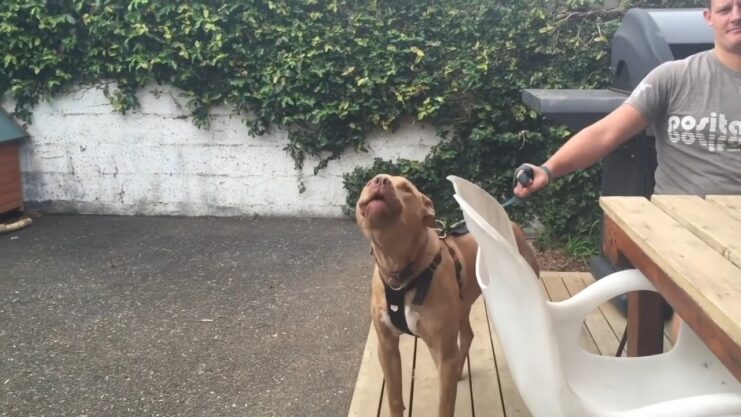
Aggression often occurs in response to a perceived threat. Identifying these cues can help prevent dangerous situations. Approach with caution and give the dog space if you notice signs such as ears pinned back, growling or showing teeth, and wide, staring eyes with the whites visible. The dog’s body will be rigid, with the hair on their back raised, and their tail may be stiff and held high or straight out.
In terms of movement, the dog may lunge, snap, or bark aggressively. It is important to stay calm and avoid eye contact with an aggressive or threatened dog. Move slowly and speak softly, using a soothing voice. Avoid sudden movements and do not raise your voice or make loud noises as this may further agitate the animal. If you have to move away, turn your body sideways so that you are not directly facing the dog.
5. The Submissive Dog
A dog that displays submissive body language is trying to appease or avoid conflict, often when interacting with a more dominant canine or human. Signs of submission include ears back, avoiding direct eye contact, and lip licking or yawning as calming signals. The dog’s body will be lowered, with the tail tucked between its legs, and it may roll over to expose its belly, a classic sign of submission.
In terms of movement, the dog may approach slowly with their body low to the ground, or it may crawl toward the person or dog they are submitting to.
6. The Curious or Alert Dog
A curious or alert dog will focus on something that has caught its attention, such as a new sound, smell, or sight. Their ears will be forward and perked, with wide and focused eyes, and they may tilt their head to the side to get a better look or listen. The dog’s body will be upright and poised, with the tail held horizontally or slightly raised.
In terms of movement, the dog may stand still or move cautiously toward the source of their curiosity. It’s important for pet owners to observe their dog carefully during these moments so that they can provide comfort, reassurance, and safety as needed.
7. The Overstimulated Dog

An overstimulated dog may exhibit a mix of excitement, anxiety, and frustration, often in high-energy environments like dog parks or during intense play sessions. Recognizing these signs can help you intervene before your dog becomes overwhelmed. The dog’s ears will be up and forward, and they may pant heavily, bark, or whine.
Their body will be tense and rigid, with the tail held high and wagging rapidly. In terms of movement, the dog may pace, jump, or spin in circles, displaying an inability to settle or focus.
Conclusion
Understanding your dog’s body language is key to building a strong and healthy relationship with your furry friend. By learning to recognize and interpret these signals, you can better anticipate your dog’s needs, emotions, and reactions. Remember that each dog is unique, and individual variations in body language may exist.
With time and experience, you’ll become an expert in decoding your dog’s signals and responding appropriately to ensure their comfort, happiness, and well-being. In doing so, you’ll strengthen the bond you share with your canine companion and enjoy a deeper, more fulfilling relationship with them.
The post Understanding Dog Body Language: The Art of Canine Communication appeared first on Oh Mi Dog.
When Do Dogs Need Supplements to Better Their Health? Paws-itive Benefits 8 May 2023 1:13 AM (last year)
It’s common for humans to take supplements to improve their health, and many pet owners wonder whether their furry friends need the same. But the need for supplements depends on several key factors.
While some dogs do need supplements, they can get sick if they eat too many. Keep reading to learn more about canine supplements.
Are Supplements Helpful for Dogs?
The need for, and benefits, of supplements depend on a dog’s diet, health, and age. Diet is the most significant determining factor, as over-supplementing a dog can cause adverse health effects. You may need to supplement depending on what your pup eats and the nutrients included in its diet.
Most commercial dog food claims to be nutritionally balanced, though you’ll need to read the ingredients to know if that’s really true. Even if the ingredient label lists all the best fruits, veggies, and meats, it may be hiding the fact that many nutrients were cooked, blended, or ground out and are no longer helpful.
It’s essential to research the food you feed your furry friend. Fido may need a boost of something, but you don’t want to cause illness.
Before giving your dog any supplement, consult your vet to determine which supplements would be the best..
Do You Need to Add Supplements to a Raw Dog Food Diet?

While some raw diets contain all the necessary nutrients, most raw-fed dogs do need supplements to maintain their health. Some raw food preparation methods strip vital nutrients from ingredients, and not all food sources are created equal when it comes to nutrition.
Canine supplements may also support your dog’s health based on the recipes you use for creating raw food. Take notes of what you feed your dog and its reactions to determine whether you should incorporate any additional supplements. Check out this supplement from drharveys.com for your dog.
Do Supplements Help Dogs Manage an Illness or Condition?
When your furry friend isn’t feeling well, it’s understandable to want to find a solution ASAP. However, supplements won’t be effective without the support of a balanced diet. The combination of a proper diet and necessary supplements is the best way to tackle symptoms of different illnesses, such as:
- Anxiety
- Depression
- Joint problems
- Kidney disease
- Osteoporosis
- Skin problems
Do Dogs Need Supplements as They Age?
Puppies need certain nutrients, like calcium and protein, to ensure their bodies grow without complications. Similarly, as a dog ages, certain parts of its body won’t work as well as they once did.
The kidneys and joints tend to suffer most in older dogs, and supplements can help if you don’t feed your pup a diet catered to those specific needs. For example, omega-3 supplements are great for joint problems and inflammation. Read more here.
What Kind of Supplements Are Best for Dogs?

The best supplements depend on each dog’s unique health needs. Here are the most common supplements used for dogs and their benefits.
Vitamin A
Vitamin A can improve vision, immune function, and reproduction, as well as cell growth, which supports all body processes. Read more about the benefits of Vitamin A here.
Vitamin B
Vitamins in the B family go by many names other than vitamin B, such as:
- Biotin
- Folate
- Niacin
- Riboflavin
- Thiamine
Each vitamin plays a different but crucial role in keeping your dog healthy. Examples include:
- Breaking down fat and protein
- Generating glucose
- Regulating hormones
- Distributing energy
- Improving cognitive function
- Improving skin condition
- Maintaining metabolism
- Ensuring proper function of the nervous system
- Promoting enzyme functions
Vitamin C
Vitamin C is not only good for your furry friend’s immune system, but also reduces inflammation, improves iron absorption, and keeps your pup’s brain sharp through the aging process. This powerful antioxidant aids in eliminating elements that cause inflammation, such as free radicals.
Vitamin D
Vitamin D can help maintain proper phosphorus and calcium levels to support bone growth and strength. This vitamin also plays a role in strong, healthy teeth.
Omega-3
Omega-3 is probably best known for reducing inflammation and improving joint health. This supplement can also boost brain, skin and coat, kidney, heart, and liver conditions.
Probiotics
Probiotics help with digestion. When a dog struggles with digestion, it can affect the entire body. Your pup may have less energy, become susceptible to illness, and even feel depressed.
The digestive system includes good and bad bacteria. When harmful bacteria overwhelm the good, digestive problems often result. Probiotics are filled with good bacteria, helping the body maintain proper balance.
Do Supplements Make Dogs Sick?
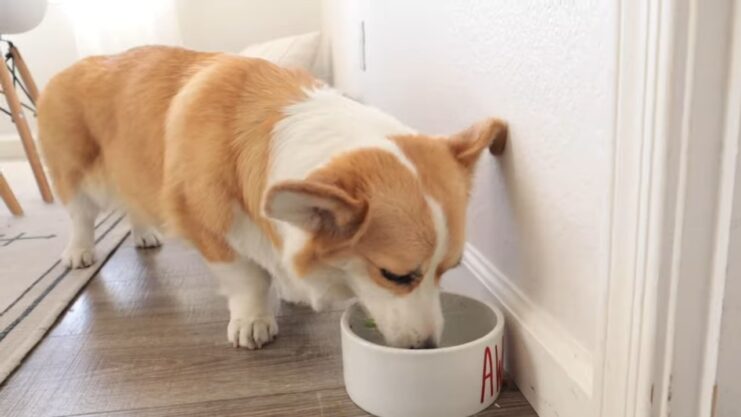
Some pet parents don’t use supplements because they fear making their dogs sick. It’s a valid concern—there is such a thing as over-supplementing. This concern is why it’s so crucial to note your dog’s diet, especially if it eats raw food.
Here’s what can happen when a dog has too much of any one supplement:
- Omega-3: Diarrhea, vomiting, weight gain, weakened immune responses
- Probiotics: Bloating, gas, stomach pain, and vomiting
- Vitamin A: Bone growth around joints causing pain and stiffness
- Vitamin D: Diarrhea, kidney problems, lack of appetite, muscle weakness, vomiting
You should also make sure none of the supplements contain xylitol. This sugar crystal is toxic to dogs, causing liver problems and blood sugar levels to drop. It’s often found in chewable or fast-melting supplements. Read more about which supplements to stay away from here.
Why Does Over-Supplementing Happen?
You might wonder why Vitamin B and C aren’t on the list above. Overuse of these vitamins is rare because they’re water-soluble.
Supplements can be broken into two categories: water- and fat-soluble. Water-soluble supplements like vitamins B and C dissipate in water, so it’s less common for these vitamins to build up in a dog’s system. Even if a dog ingests more than is needed, the excess will typically exit the body through urination.
Meanwhile, fat-soluble vitamins like vitamins A and D are stored in fatty tissue. While it’s great for keeping a dog going throughout the day, this factor means a buildup is more likely to occur.
Think of your dog’s body as a machine. Everything has to work together in sync to function correctly. But if one gear spins too fast or a component overheats, the problem throws the whole machine into chaos.
Over-supplementation is the chaos that throws things off in your furry friend’s body. All the vitamins and minerals in your dog’s body need a precise balance to keep all systems running smoothly.
Balance Is Everything When Giving a Dog Supplements
The possibility of over-supplementing shouldn’t scare you away from using supplements in your dog’s diet. Instead, be encouraged to take note of your dog’s nutritional needs and identify any potential gaps.
When giving supplements, start with small doses to allow the body to adjust to the new addition. Keeping your beloved canine companion healthy starts with proper nutrition. As long as you put in the effort and do some research, your furry friend can live their best, healthiest life.
The post When Do Dogs Need Supplements to Better Their Health? Paws-itive Benefits appeared first on Oh Mi Dog.